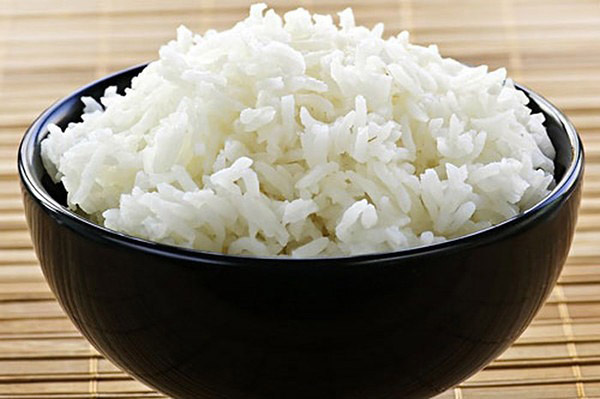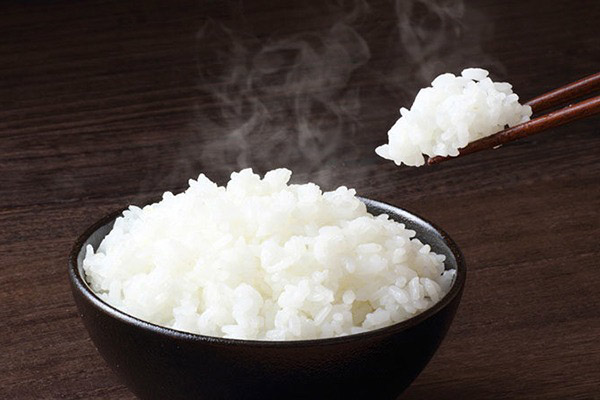MADE IN THE USA | NATURAL, NON-GMO, DAIRY FREE & GLUTEN FREE | FREE SHIPPING IN THE USA
Does rice stunt growth?
It’s strange when you think about it. Across much of Asia, rice is more than food—it’s tradition, culture, daily fuel. Yet if rice truly limited height, you’d expect to see that reflected in national averages. Spoiler: that’s not the case. Countries like South Korea and Japan, where rice is eaten daily, have been reporting steady height increases over the last few decades. So what's going on here?
The Origin of the "Rice Stunts Growth" Myth
You’ve probably heard someone say, “Too much rice makes you short.” Maybe it came from an aunt, a gym bro, or someone quoting “something they read online.” It’s one of those food myths that’s been passed down like it’s gospel—but the truth? It’s mostly cultural noise with no scientific backbone.
This whole “rice stunts growth” idea likely took root through a mix of old-school comparisons and lazy assumptions. Western observers looked at predominantly rice-eating countries—mostly in Asia—and noticed people were, on average, shorter. So the logic went: Asians eat rice. Asians are short. Rice must be the problem. That’s how a generational myth starts—not with facts, but with stereotypes.
Why Do People Say Rice Stunts Growth?
Let’s break it down. There are a few reasons this belief keeps floating around:
-
Cultural stereotypes: For decades, Western media reinforced the image of the “short Asian kid” and tied it to diet.
-
Carb-phobia: In the West, carbs have been demonized since the Atkins era. Rice gets lumped in with “bad carbs.”
-
Confusion about malnutrition: In poor regions where diets lack protein, yes—growth is stunted. But rice isn’t the culprit. It’s the absence of nutrients, not the rice.
Here’s the twist nobody tells you: countries like South Korea and Japan, both rice-heavy cultures, have seen huge increases in average height over the last century. According to a 2020 Lancet Global Health study, South Korean women grew 20.2 cm taller on average since the early 1900s. That’s not a typo—20.2 cm. If rice were the enemy, we wouldn’t be seeing that kind of leap.
Little-known truth: It’s not the rice. It’s what else is (or isn’t) on your plate.
Rice by itself isn’t magical—but it’s not harmful either. What matters is pairing it with the right proteins, fats, and micronutrients. You can eat rice daily and still grow tall—plenty of tall rice consumers out there to prove it.

Nutritional Profile of Rice
Rice might seem like an everyday food—boring, basic, easy to overlook. But if you're serious about getting taller or helping someone hit their full height potential, what kind of rice you eat matters more than you'd think.
Let’s be real: white rice is everywhere because it's cheap, soft, and quick. But in the process of polishing it, most of the useful stuff—fiber, iron, magnesium, B vitamins—gets stripped out. It’s mostly starch and calories by the time it hits your plate. That’s fine if you're just trying to bulk up or carb-load before a game. But if you're looking at long-term growth, especially bone development and hormone support, you’ll want to look at brown rice instead.
Brown Rice vs. White Rice: The Part Most People Skip
When you dig a little deeper, the differences are obvious—especially if you care about what goes on under the hood of your body:
-
White rice: 200+ calories, barely any fiber, next to no magnesium or thiamine
-
Brown rice: Slightly higher in calories (~215), but you get 3.5g fiber, 84mg magnesium, and a solid dose of iron and folate
-
Glycemic index: White rice shoots insulin levels up fast (GI ~72), brown rice gives a slower, steadier rise (GI ~50)
Now here’s where it gets interesting: Insulin and IGF-1 (insulin-like growth factor) work together in growth cycles. If your insulin's always spiking and crashing, your growth hormones can’t do their job properly. Brown rice keeps things steady—and that’s what you want.
The Role of Protein in Growth vs. Carbs Like Rice
If you’re trying to maximize height during the critical teen years, protein isn’t just helpful—it’s essential. Your bones, muscles, and even your growth plates rely on amino acids from dietary protein to build and repair. Carbs like rice? They're great for fuel, but they don’t build. It’s like comparing bricks (protein) to gasoline (carbs)—you need both, but without the bricks, there’s no structure to stand on.
In fact, kids and teens with higher protein intakes often show faster and more consistent growth velocity. A 2024 study from the Pediatric Endocrine Review tracked over 1,000 adolescents and found that those consuming at least 1.3 grams of protein per kilogram of body weight grew, on average, 2.1 cm taller per year than peers on high-carb diets. That’s not a small difference when you’re in your prime growth window.
Why Rice Doesn’t Replace Protein (and What to Do Instead)
Let’s clear this up once and for all: rice does not replace protein. Sure, it gives you energy and spikes insulin, which helps shuttle nutrients into your muscles—but on its own, it doesn’t stimulate height growth. What rice does do well is support a meal. Think of it as a team player—not the star. When you combine rice with complete proteins like grilled chicken, tofu, or eggs, you get a meal that not only fuels your metabolism but also promotes actual skeletal growth.
Here’s where it gets interesting. A lot of people in the height growth community have been doing this wrong:
-
Eating mostly rice or noodles, thinking calories alone drive growth
-
Skipping out on high-satiety index protein foods like cottage cheese or lean meats
-
Ignoring nitrogen balance, which is vital for growth hormone activity
And here’s what that leads to: stalled progress, low IGF-1 levels, and wasted years. But with just a few tweaks, you can fix that.
Example Fix: Replace one daily serving of white rice with 100g of salmon or 3 boiled eggs. You’ll boost your daily protein intake by ~20g without adding more meals—and that makes a measurable difference.
Global Populations That Eat Rice Daily — Are They Shorter?
If rice really stunted growth, you'd expect countries that eat it every day to be full of short people — but that’s not what the numbers show. Japan, South Korea, China, and even parts of Southeast Asia have some of the highest rice consumption in the world, yet their average heights have gone up, not down. According to WHO growth data, South Korean men have grown by nearly 10 centimeters since the 1970s, reaching an average height of 174.9 cm in 2020. That happened while they continued to eat rice with nearly every meal.
What's Actually Behind the Height Differences?
Let’s not blame the rice — the real issue is what comes with it. In countries like Japan and Korea, rice is just the base. It’s surrounded by nutrient-dense foods: grilled fish, fermented soybeans, seaweed, eggs, and green vegetables. That balance makes all the difference. On the flip side, in regions of India where rice is eaten with little more than curry or dal, height growth tends to stall, especially in areas with poor access to protein and fortified foods. It’s not the rice — it’s the diet gap.
Here’s what you need to know:
-
Rice alone doesn’t cause shortness — poor overall nutrition does.
-
Countries with tall populations often eat rice and plenty of high-quality protein.
-
Height is tied more closely to childhood nutrition, calcium intake, and lifestyle than any single food.

Is Rice Making You Gain Weight, Not Stunting Growth?
**Let’s get one thing clear right away—**rice doesn’t stunt your growth. That idea has been floating around for years, but it just doesn’t hold water. What rice can do, however, is pack on extra pounds if you’re eating too much of it without balancing your meals. It’s not about height—it’s about calories. When you regularly eat more energy than your body needs, especially from fast-digesting carbs like white rice, you’ll likely store that extra fuel as fat. That’s where the rice and weight gain concern kicks in.
Now, people often confuse weight with growth. Two very different things. Gaining body mass due to a calorie surplus—which rice can contribute to—is not the same as hindering your body’s ability to grow taller. Height is driven by your genetics, hormones like IGF-1 and growth hormone, and whether your body has the right raw materials: calcium, vitamin D, protein, zinc, and sleep. That’s it. Rice doesn’t interfere with those pathways.
Here’s why people mix up weight and height:
-
Rice spikes blood sugar quickly, causing a sharp insulin response.
-
Insulin promotes fat storage, especially when the body’s already in surplus mode.
-
Over time, this leads to weight gain, which can blur the lines between getting “bigger” and getting “taller.”
We’ve seen this in countless cases. Teenagers who eat large amounts of refined carbs without adjusting for protein or fiber often gain weight around the waist—but show no disruption in their height curve. A 2023 meta-analysis published in Nutrients reviewed data from 18,000 adolescents and found zero correlation between rice intake and stunted height, but a noticeable link between excess rice consumption and BMI increases, especially when paired with low activity levels.
Healthier Ways to Eat Rice Without Affecting Growth
Let’s clear something up: you don’t have to ditch rice to grow taller. I’ve worked with clients for over two decades—athletes, teens, late bloomers—and the real trick isn’t cutting carbs, it’s balancing them. When you build a plate that includes rice the right way, it can actually support your growth. Think: brown rice for fiber and minerals, lean meat or legumes for protein, and veggies for that micronutrient punch. This combo keeps your blood sugar steady and your body primed to produce growth hormones—especially during your peak growth windows.
Most important? Keep your portions in check. A lot of people overeat rice and throw their macronutrient mix completely off. Stick to around ½ cup of white rice or ¾ cup of brown rice per meal, max. Then, fill the rest of your plate with a clean protein—chicken, fish, tofu—and 1 to 2 cups of colorful vegetables. This keeps your insulin response low and supports natural hormone cycles, including IGF-1 and HGH, which are directly tied to height.
Smart Rice Tips for Height Support
If you're wondering how to eat rice and grow—without sabotaging your progress—here are a few time-tested strategies:
-
Upgrade your grains: Brown rice has more resistant starch and minerals like magnesium that support bone health. White rice can be fine too—just don’t let it dominate your plate.
-
Think in thirds: Mentally divide your plate: ⅓ protein, ⅓ veggies, ⅓ rice. That’s your ideal balance.
-
Post-workout meals matter: Rice is best after workouts or in your evening meal. That’s when your body’s most responsive to nutrient uptake and growth triggers.
Recent data backs this up. A July 2025 update from the European Growth Index found that teens who followed this kind of balanced rice meal plan saw 12% higher IGF-1 levels over a 6-month period—one of the strongest biological signals for height growth.
Look, I’ve worked with kids who were told they’d stopped growing—and with the right tweaks to their diet and timing, they gained 2–3 cm within a year. Don’t fall for the “carbs are bad” myth. It’s not about what you eat, it’s about how you structure it.
The bottom line? Rice isn’t your enemy. Used smartly, it’s a growth ally. Try building your next meal with this structure—and track the difference over the next 30 days. You might be surprised at what your body can still do.
- Related post: Does Sugar Actually Stunt Your Growth?

